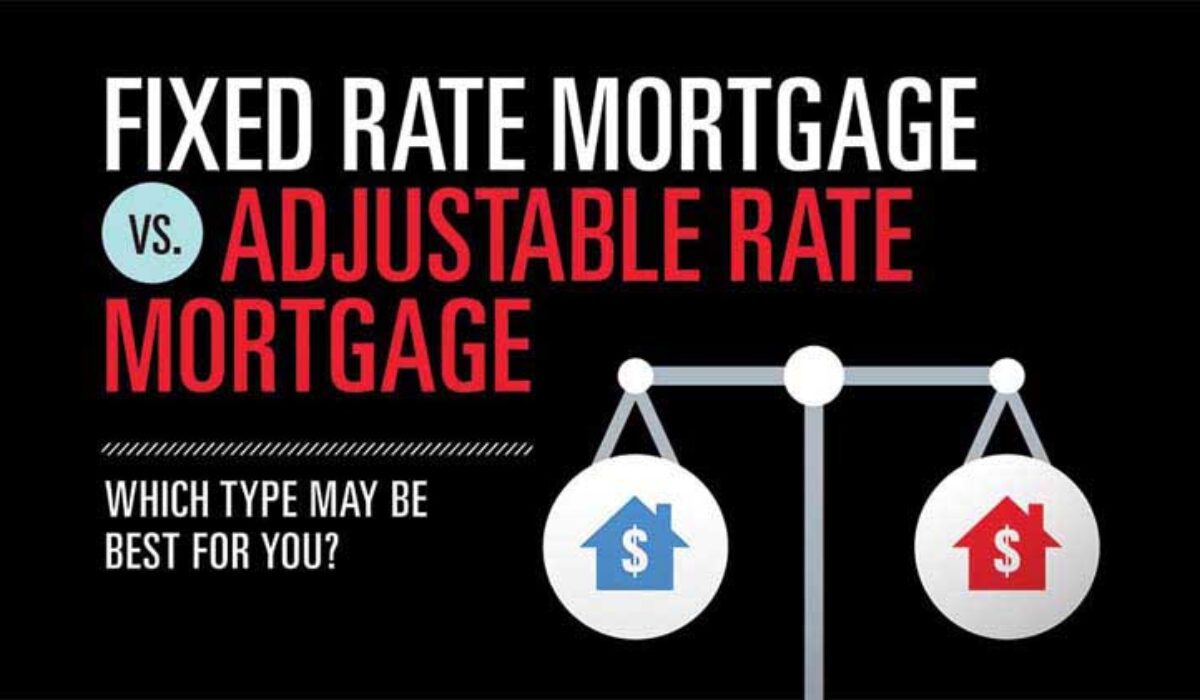Choosing Your Mortgage: Fixed-Rate vs. Adjustable-Rate Mortgages – Which Is Right for You?
When it comes to financing your home purchase, one of the most significant decisions you’ll face is selecting the type of mortgage that best suits your needs. Two common options are fixed-rate mortgages (FRMs) and adjustable-rate mortgages (ARMs), each offering unique benefits and considerations. In this blog post, we’ll explore the differences between fixed-rate and adjustable-rate mortgages to help you make an informed decision about which option aligns best with your financial goals and preferences.
Understanding Fixed-Rate Mortgages (FRMs):
Fixed-rate mortgages feature a stable interest rate and consistent monthly payments throughout the entire loan term. Key characteristics of fixed-rate mortgages include:
- Predictable Payments: With a fixed-rate mortgage, your monthly principal and interest payments remain the same for the duration of the loan, providing stability and predictability.
- Long-Term Planning: Fixed-rate mortgages are ideal for borrowers who prefer long-term financial planning and want assurance that their mortgage payments won’t fluctuate over time.
- Rate Security: By locking in a fixed interest rate, borrowers are protected from market fluctuations and rising interest rates, providing peace of mind and financial security.
Understanding Adjustable-Rate Mortgages (ARMs):
Adjustable-rate mortgages feature an initial fixed interest rate period, followed by periodic adjustments based on market conditions. Key characteristics of adjustable-rate mortgages include:
- Initial Rate Period: ARMs typically offer an introductory fixed-rate period, ranging from one to ten years, during which the interest rate remains constant before adjusting.
- Potential Rate Changes: After the initial fixed-rate period, the interest rate on an ARM may adjust periodically based on changes in a specified benchmark index, such as the London Interbank Offered Rate (LIBOR) or the Constant Maturity Treasury (CMT) index.
- Rate Caps and Limits: ARMs often include rate caps and limits that restrict how much the interest rate can increase or decrease with each adjustment period and over the life of the loan.
Choosing Between Fixed-Rate and Adjustable-Rate Mortgages:
Deciding between a fixed-rate mortgage and an adjustable-rate mortgage depends on various factors, including:
- Interest Rate Outlook: Consider current interest rate trends and economic forecasts to assess whether fixed or adjustable rates are more favorable in the current market environment.
- Risk Tolerance: Evaluate your risk tolerance and comfort level with potential fluctuations in monthly mortgage payments. Fixed-rate mortgages offer stability and predictability, while ARMs carry the risk of payment adjustments over time.
- Loan Term: Determine your preferred loan term and how long you plan to stay in your home. Fixed-rate mortgages are well-suited for long-term homeownership, while ARMs may be suitable for shorter-term ownership or refinancing plans.
- Financial Goals: Align your mortgage choice with your financial goals and priorities. If you value rate security and long-term predictability, a fixed-rate mortgage may be the right choice. If you’re comfortable with potential rate adjustments and seeking lower initial payments, an adjustable-rate mortgage could be a viable option.
- Future Plans: Consider your future plans and financial outlook, including potential changes in income, job stability, and lifestyle. Ensure that your mortgage choice aligns with your long-term financial objectives and ability to manage potential changes in mortgage payments.
Conclusion:
Choosing between a fixed-rate mortgage and an adjustable-rate mortgage is a significant decision that can impact your financial stability and homeownership experience. By understanding the differences between these mortgage options and considering factors such as interest rate outlook, risk tolerance, loan term, financial goals, and future plans, you can make an informed decision about which type of mortgage best suits your needs. Whether you opt for the stability of a fixed-rate mortgage or the flexibility of an adjustable-rate mortgage, remember to consult with a mortgage lender or financial advisor to explore your options and ensure that your mortgage choice aligns with your individual circumstances and objectives.



